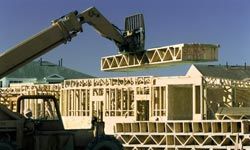Key Takeaways
- To save money on construction projects, review all project costs line by line with your contractor to eliminate unnecessary items, decide what work you can do yourself and identify parts of the project that you can postpone.
- Source your own materials when possible to find cheaper options than what your contractor might provide. Also, consider doing some work yourself to save on labor costs, but be realistic about your skills to avoid costly mistakes.
- You might be able to save money by building during the offseason, when subcontractors are in lower demand and therefore may have lower pricing. Additionally, investing in energy-efficient features may mean higher upfront costs but could save you money in the long run by lowering your utility bills.
Whether you're doing a home renovation or building from scratch, it's nice to be able to cut back on expenses in any construction project. Construction can get expensive, and since it's not as easy to get a loan as it was before the housing bubble burst, chances are you're working on a tight budget.
My husband and I added on to our house in the winter of 2011 and replaced the roof on the older part of the house in early 2012, so construction was a fact of life around here for about half a year. In the process of hiring contractors, working with an architect, and dealing with the day to day headaches of a large-scale renovation, I learned some of these money-saving tips the hard way, lucked out with others, and wish that I'd known a few more before we broke ground.
Advertisement
There are three ways to save money on construction projects: Cutting back on up-front costs, avoiding expensive mistakes, and making the finished structure less expensive to inhabit. From hiring workers and sourcing materials to doing some of the work yourself, there are lots of tricks to stay within your budget without cutting too much out of your project.




